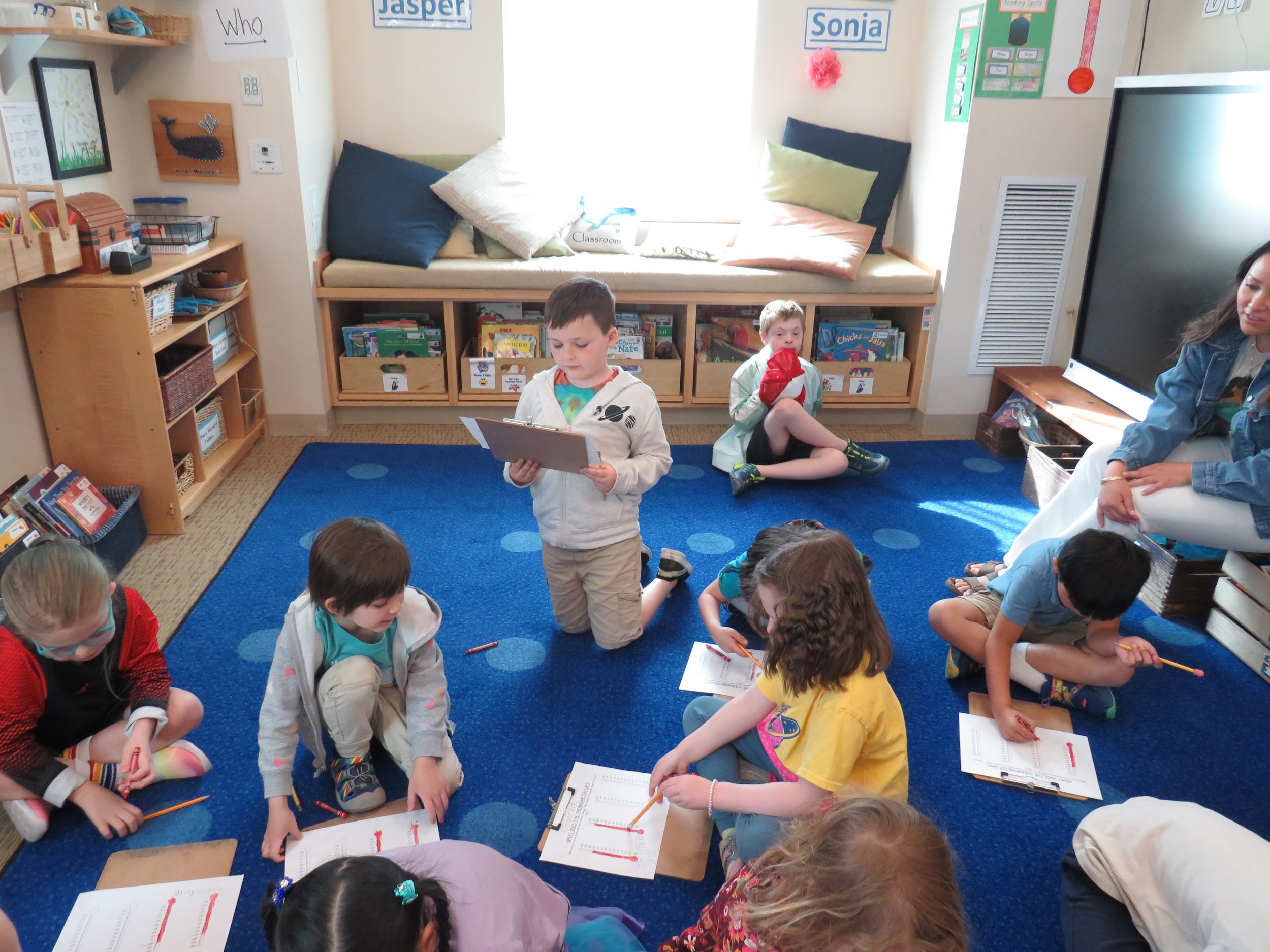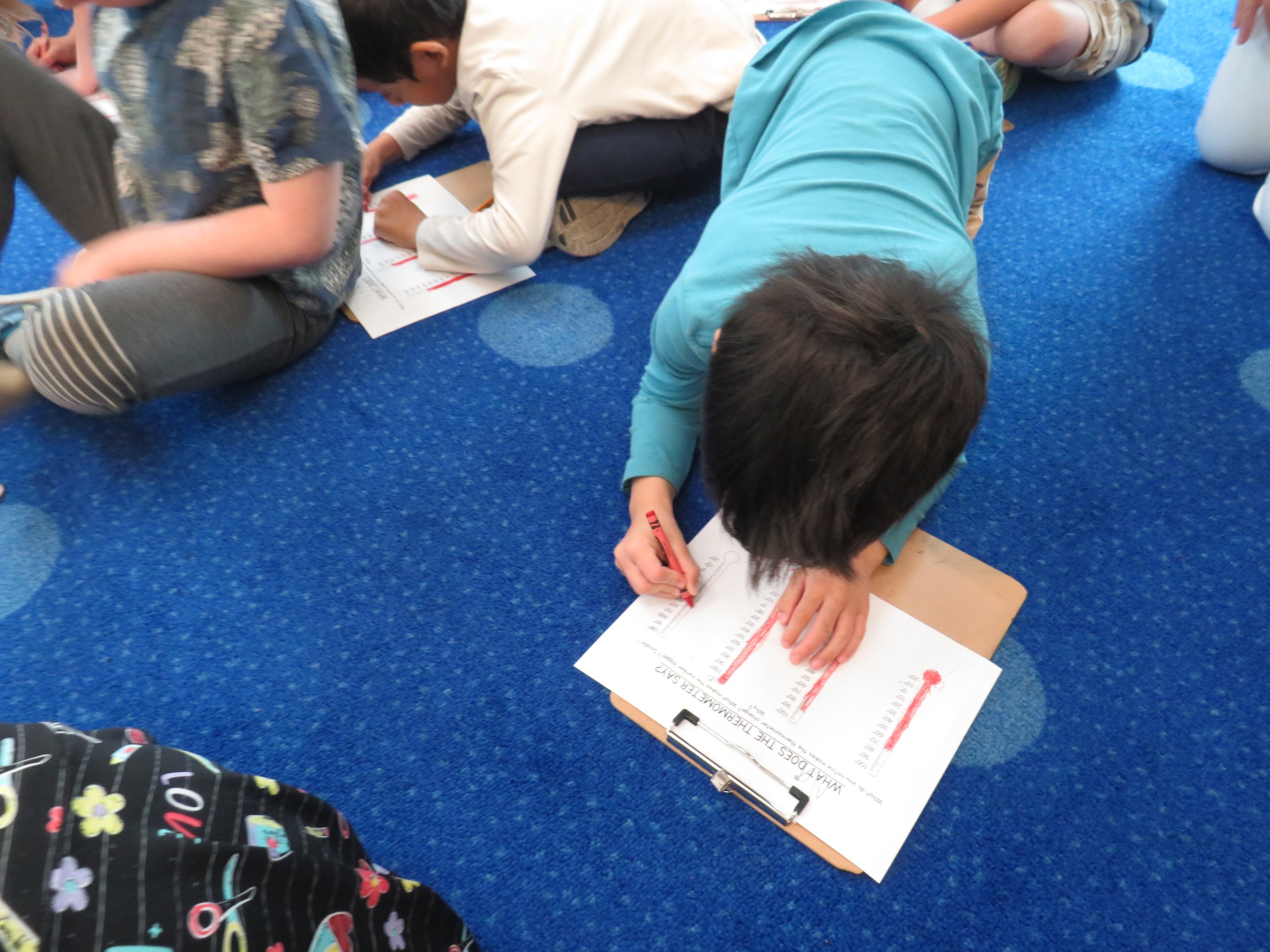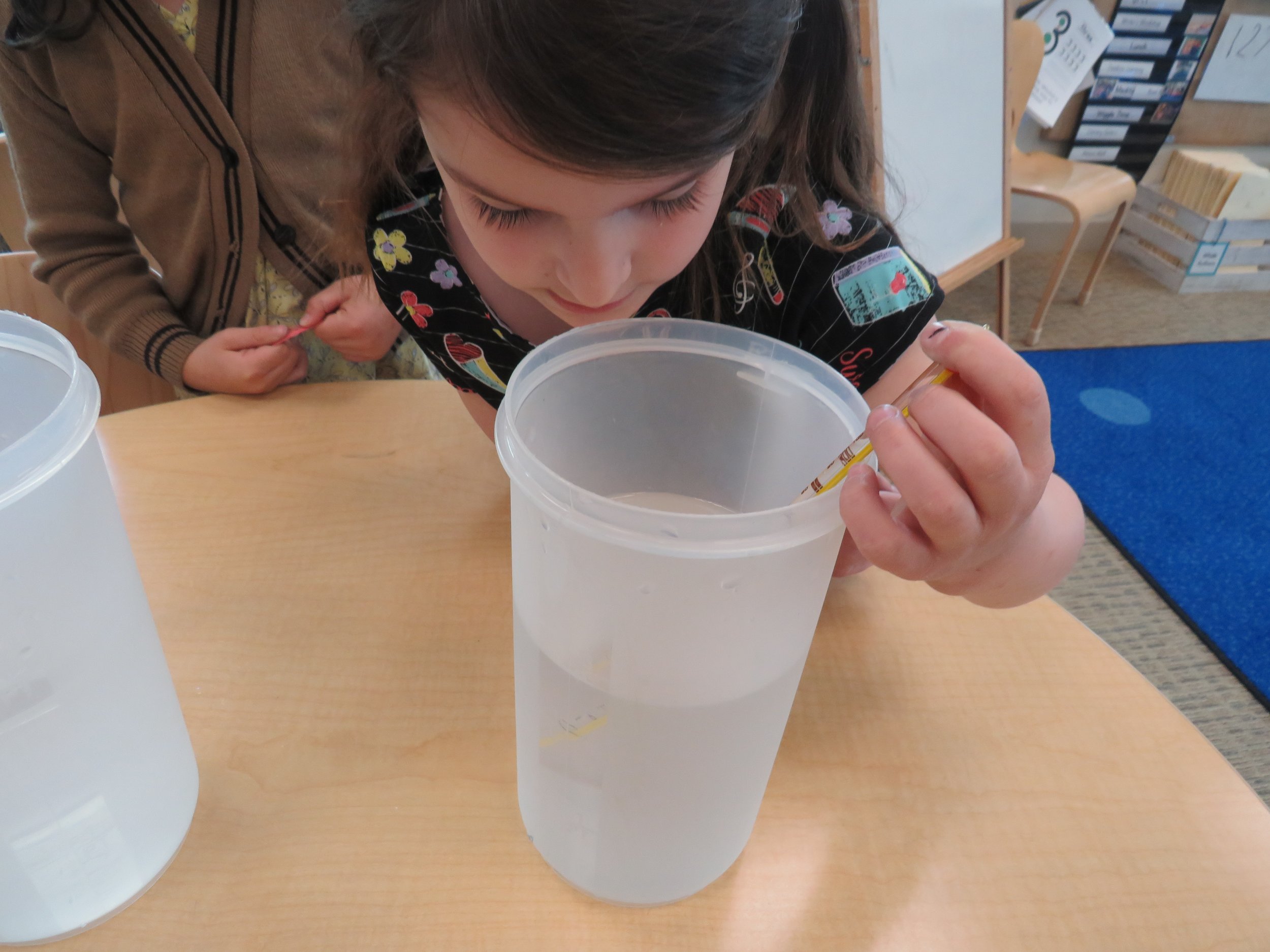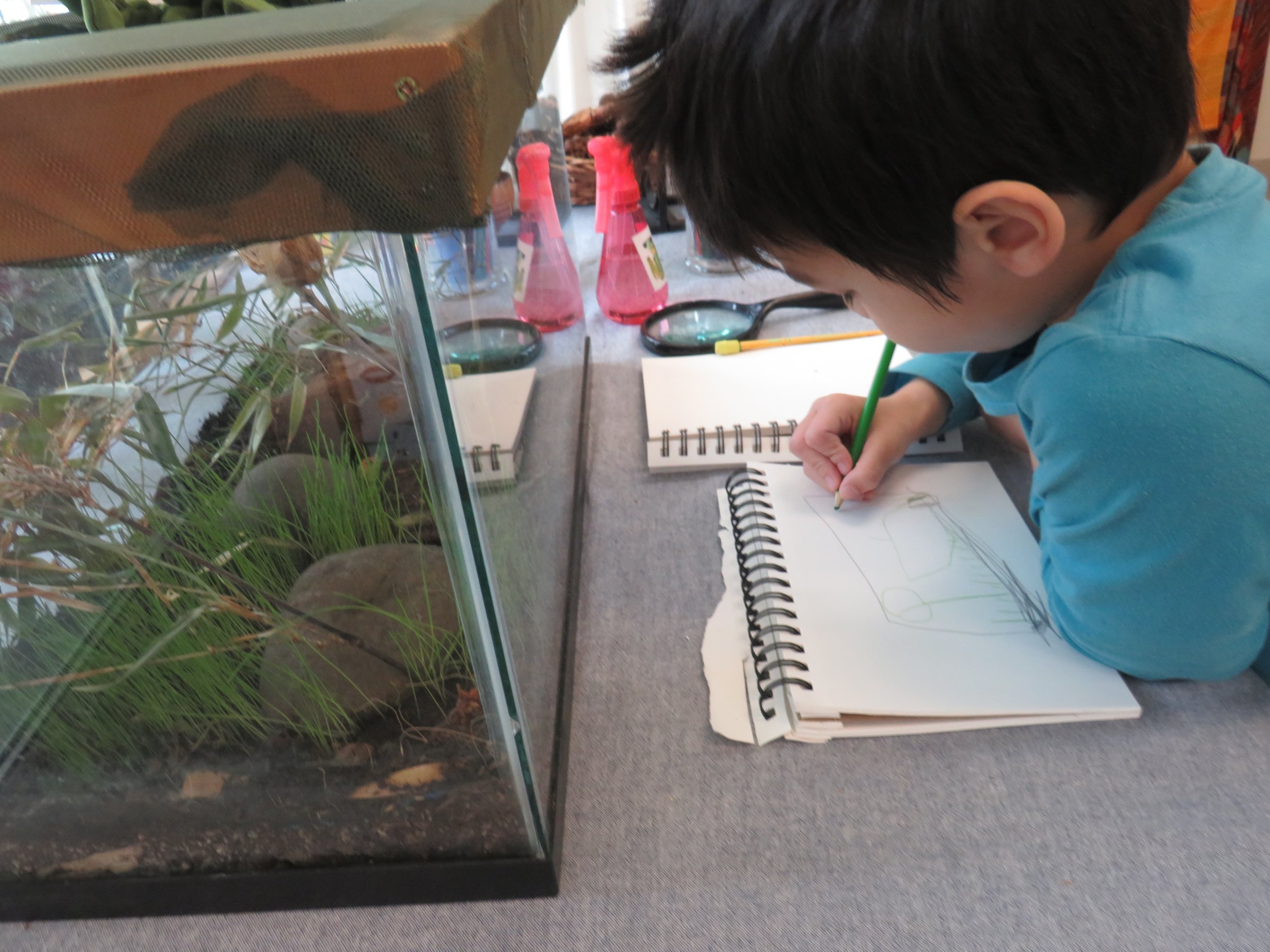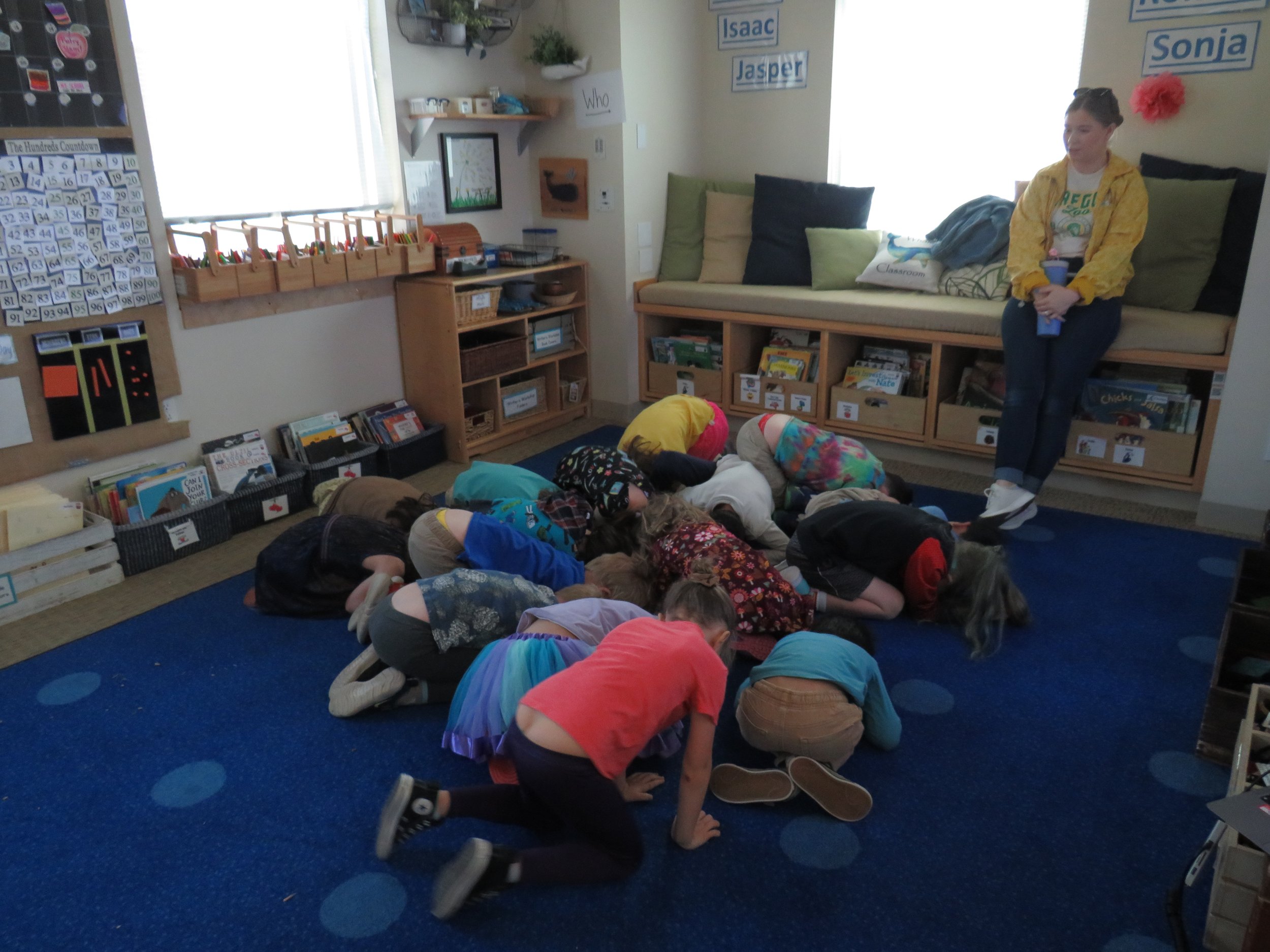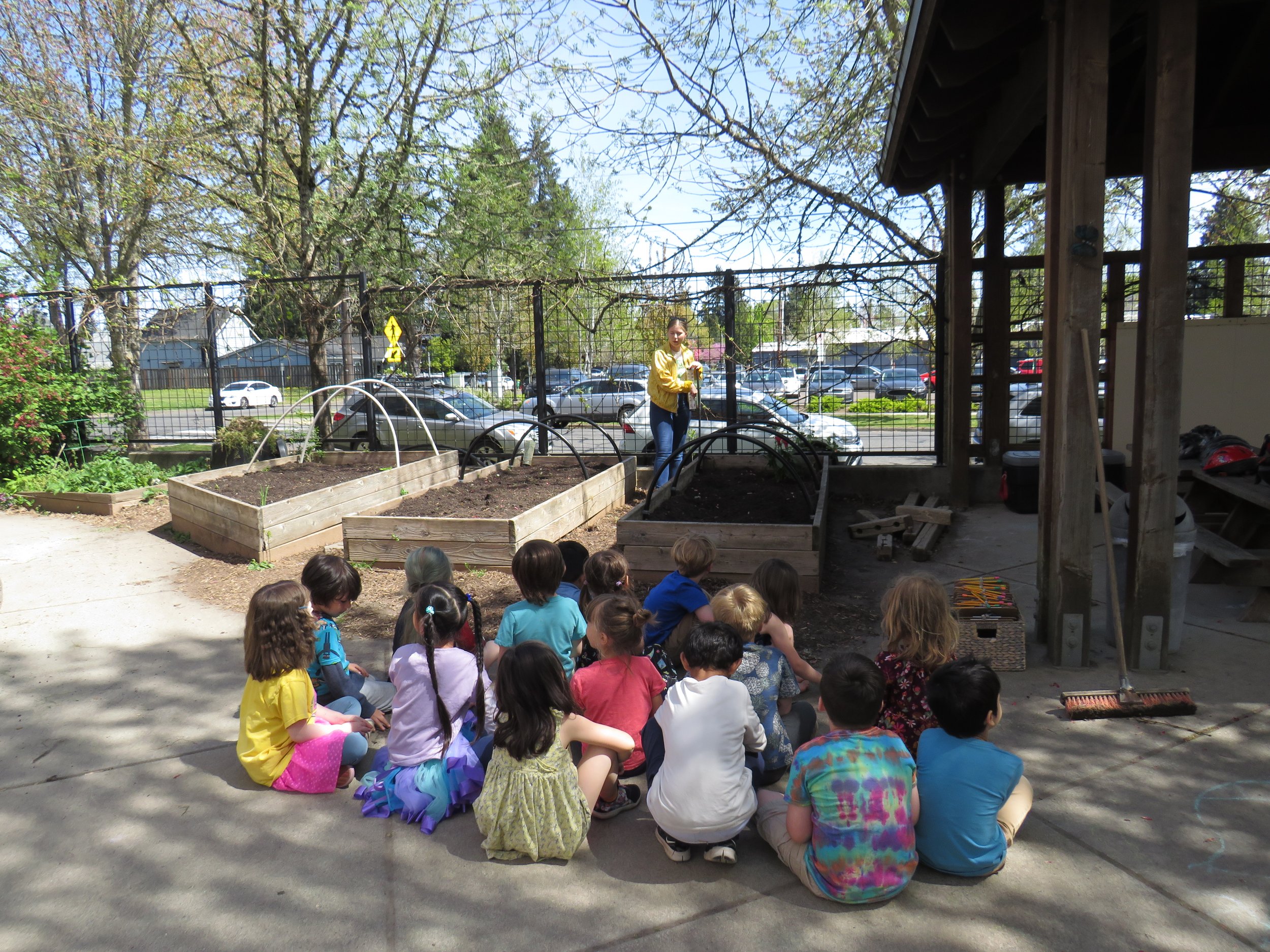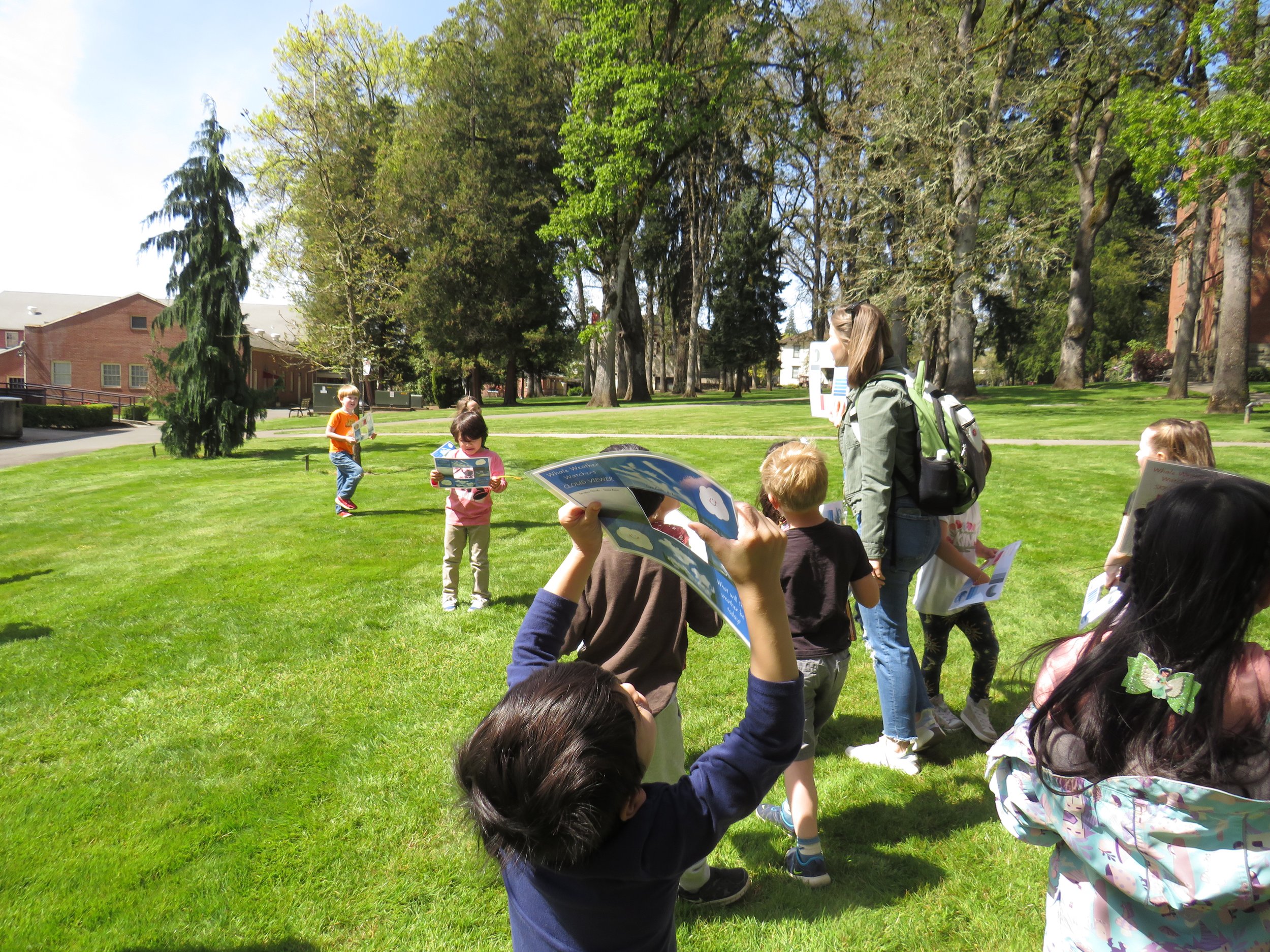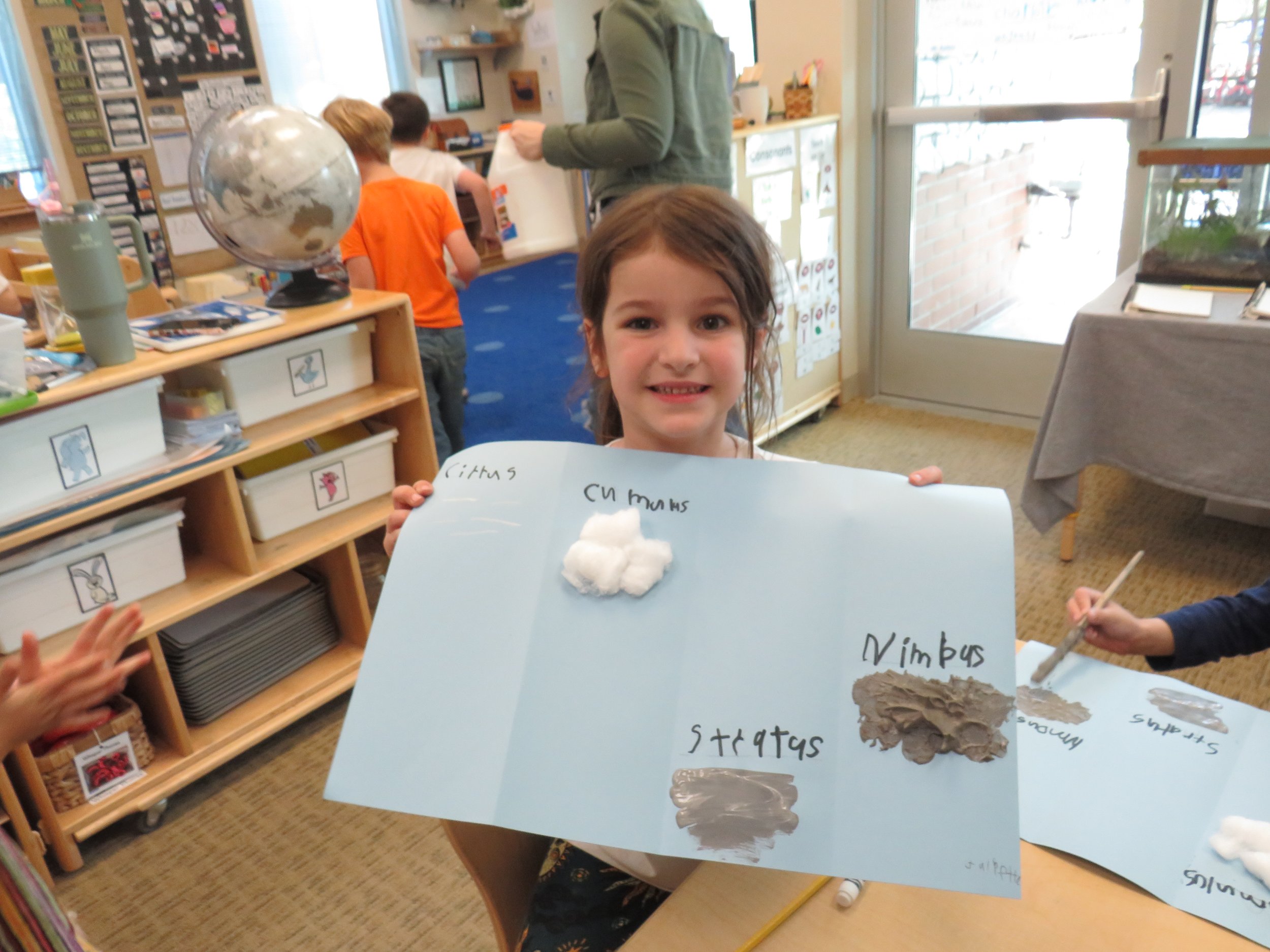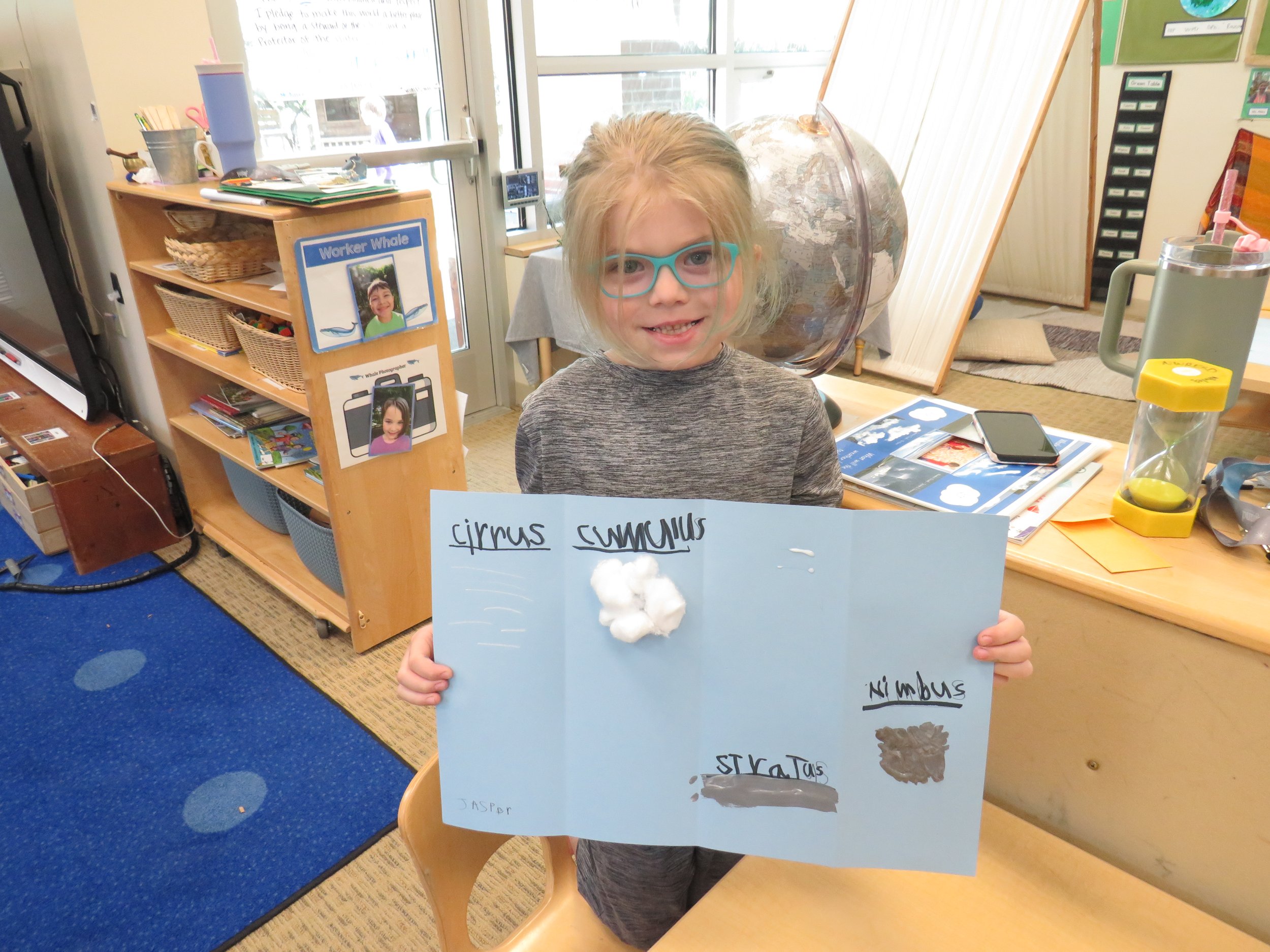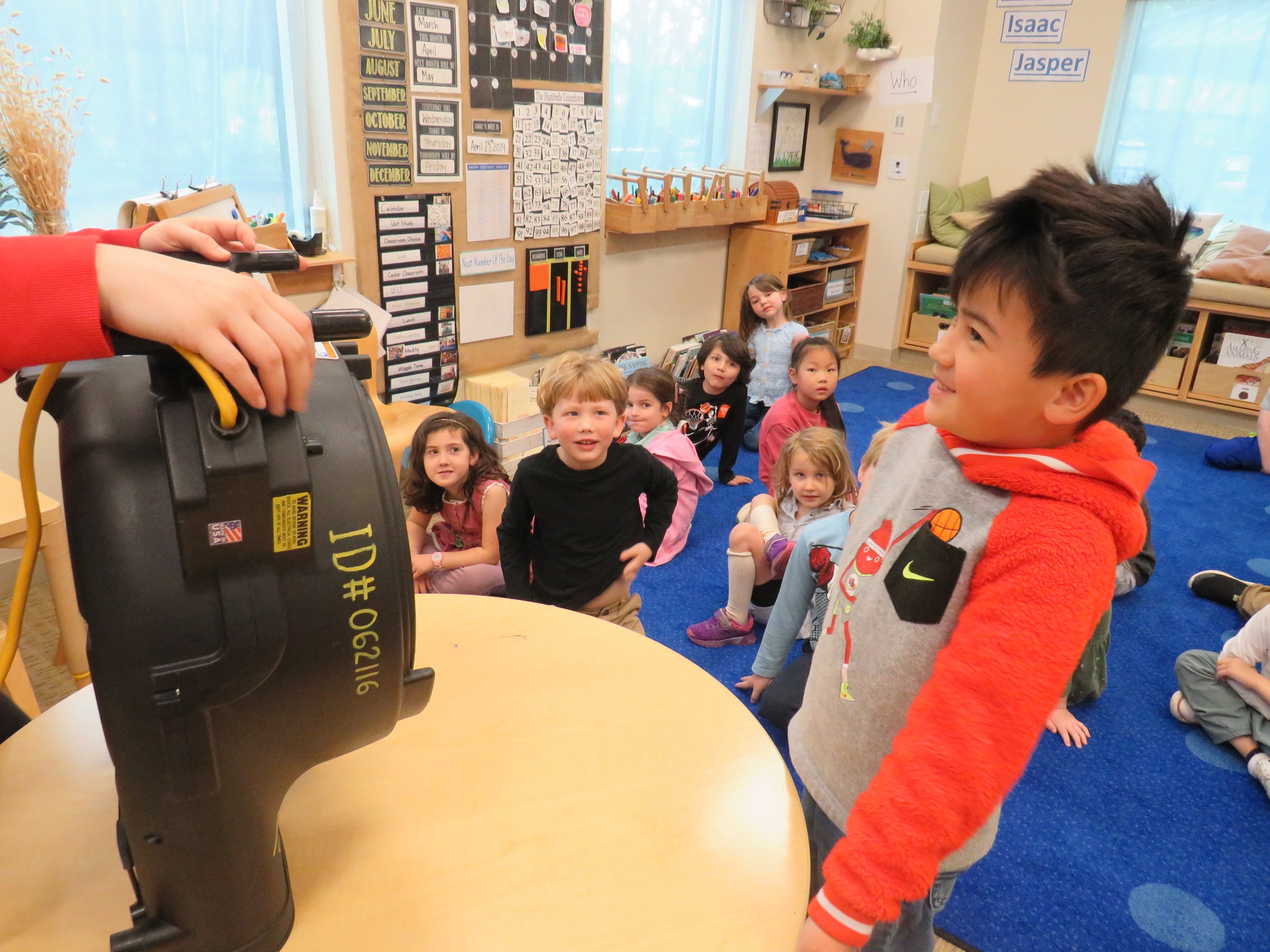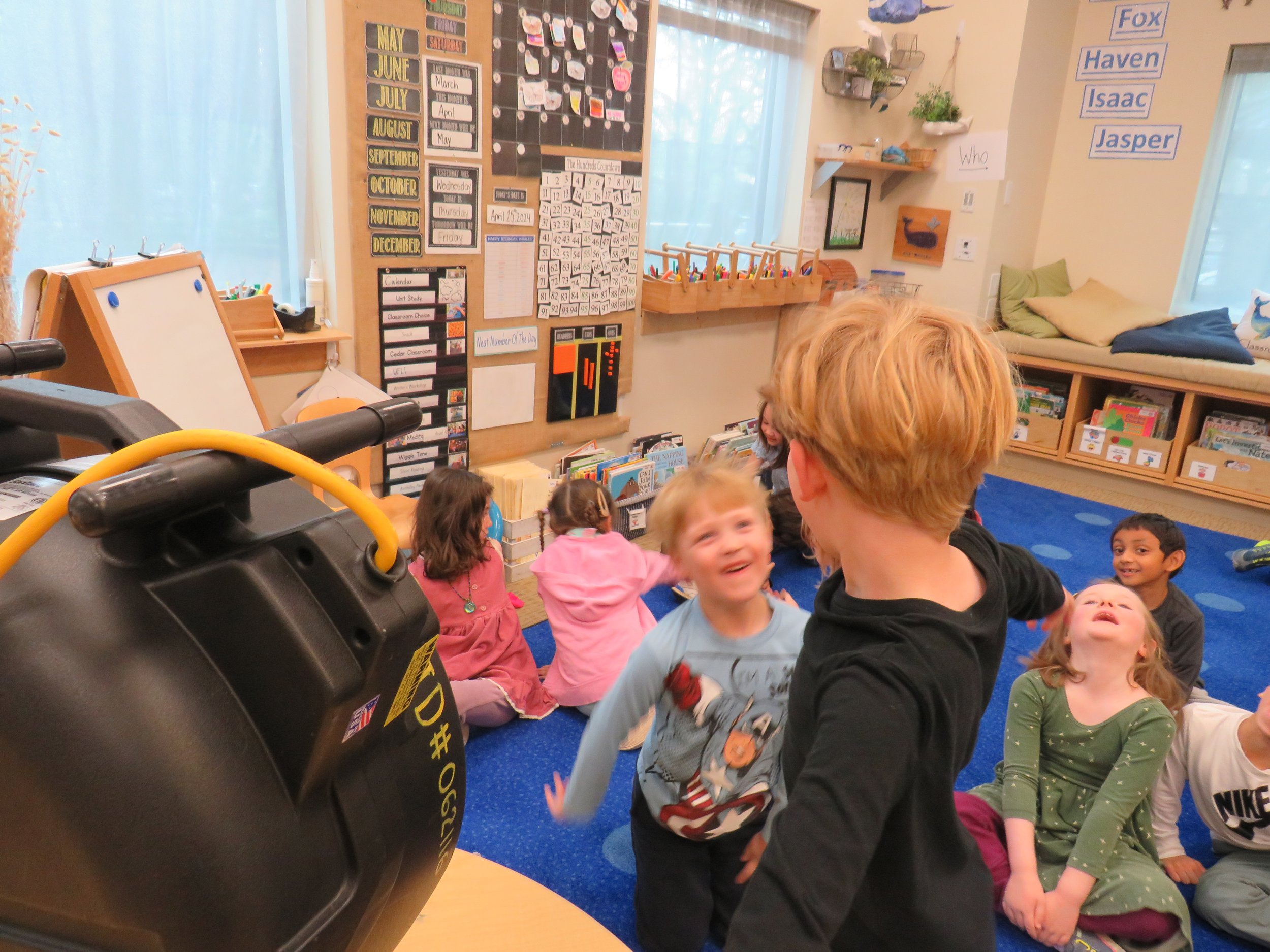Clouds, Wind, and The Whale Weather Reports
/ Abby ThompsonThe Whales put on their meteorologists hats and dived into their weather unit this week. On Monday the Whales learned about thermometers, rain gauges, and anemometers. Tools we use to predict the weather. We used a thermometer to measure the temperature of the air in the classroom, room temp. water, warm water, and ice-cold water. The Whales kept track of their data on their thermometer recording sheets. We used our knowledge about the temperature of the classroom air to predict what the temperature would be for the warm water and the ice-cold weather.
On Tuesday, the Whales studied praying mantises. We have praying mantis egg cases in our classroom and the Whales have been making observations throughout the week. They are very excited to see the Nymph praying mantises once they hatch. We looked at the praying mantis life cycle and learned some very interesting unique facts about the praying mantis. For instance, praying mantises have 5 eyeballs and they are nicknamed the ambush predator.
On Wednesday, we learned all about clouds. Clouds are made up of many tiny water molecules that cling to dust in the air and other water molecules to form clouds. We learned about 4 different clouds. Stratus clouds are like blankets in the sky. They look like they cover the sky and they typically mean, rain! Cirrus clouds are wispy and very high in the sky. These clouds mean lots of sunshine! Nimbus clouds are dark and big clouds that tell us a storm is coming! Cumulus clouds are white and puffy. Often times you can see different shapes in these clouds. Cumulus clouds mean it’s going to be a nice day! The whales went outside with cloud viewers and identified the clouds they saw in the sky. At the end of our day, the Whales created cloud art to teach others about those four different types of clouds! Check them out next week hanging right outside the Whale classroom.
On Thursday, the Whales were blown away. Literally! They felt the wind of a high powered fan. We talked about how wind feels against our bodies. We could feel the force of the moving air molecules pushing against our bodies but we couldn't see it. During our study, we found that air is there even if you can’t see it. The Whales tested this by using plastic bags to catch air. They worked together to trap air into their bags. This led us to our next question. Does air have weight? We used a balanced hanger to help us test whether or not air has weight. We used two balloons that were empty on the hanger and saw it was balanced. When we filled up one of the balloons with air, it tilted our hanger and we saw that the balloon with air was in fact heavier.
The Whales started the Whale Weather Report. They are working in teams of two to use the tools we have learned about to predict the weather of that day. Next week we will continue to do Whale Weather Reports. They get posted everyday in the lobby of the ELC.








